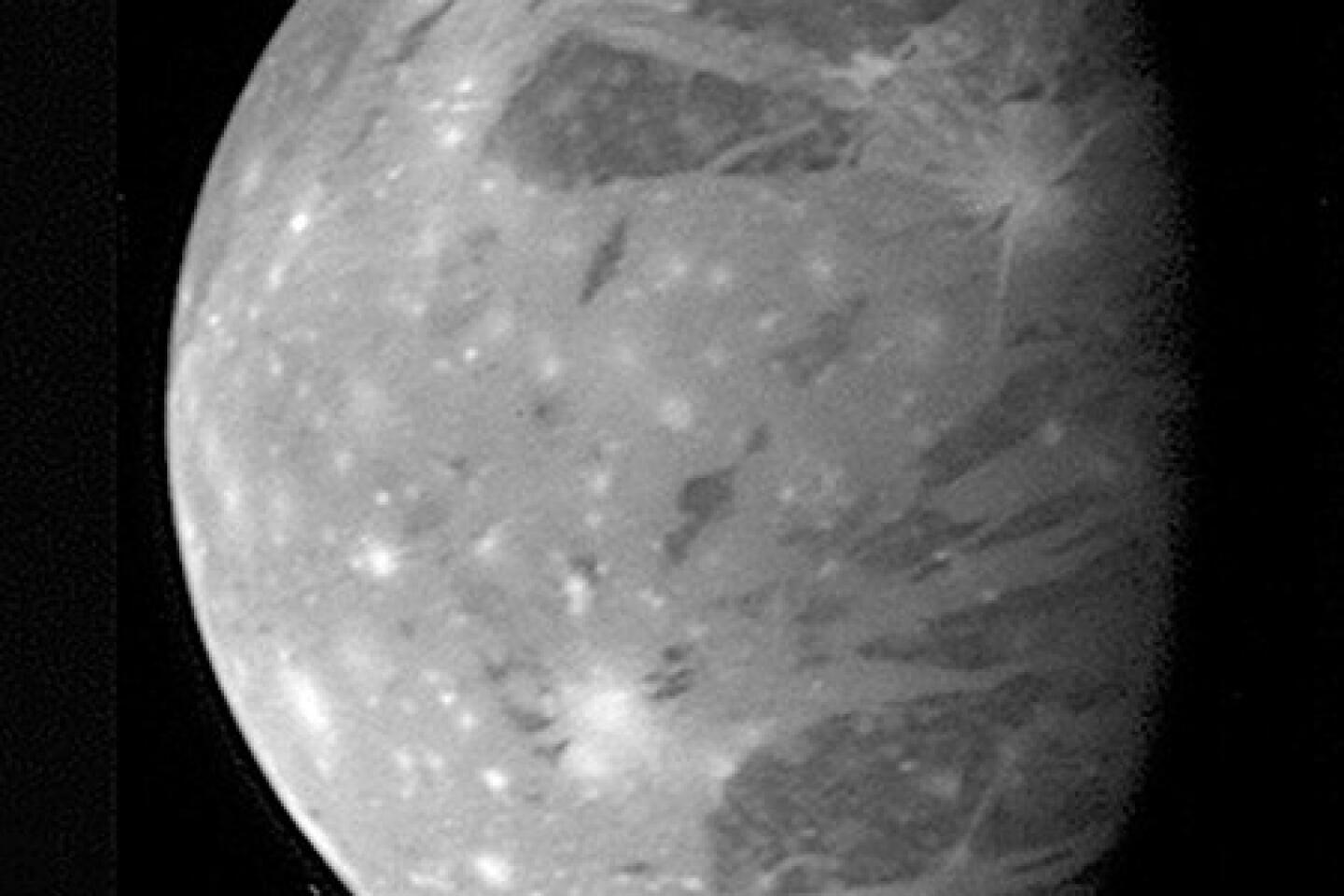Ganymede mapped: See best map yet of our solar system’s largest moon
- Share via
Scientists have a new map -- the best created so far -- of the largest moon in our solar system, Ganymede, and it is both beautiful and revealing.
Ganymede is technically a satellite of Jupiter, but it is really a world unto itself. It is bigger than both Mercury and Pluto. If it orbited the sun rather than Jupiter, we would likely consider it a planet.
If we could peer deep beneath its icy surface, we might find a liquid ocean. And deep beneath that, at the center of the moon, there may be a different type of ice that forms under extreme pressure, scientists said.
If there is life on Ganymede, however, it will be difficult for our spacecrafts to find. That first layer of ice runs deep.
PHOTOS: Amazing images from space
The surface of Ganymede is relatively smooth and made up of two main types of material known simply as dark material and light material. The dark material, rendered in browns and purples on the map above is covered with a thick layer of loose, dry, powder that could be several feet thick. The light material is brighter and newer, with less evidence of impacts. On the map above it is rendered in aqua. The yellows, reds and greens on the map represent big impact features.
“What’s interesting about Ganymede is that if you stood in the right place, you could have one foot on something that is 3 billion years old, and the other on something that is 1 billion,” said Wes Patterson of the John Hopkins Applied Physics Laboratory. “There is that kind of abrupt change in the areas of the surface,” added Patterson, who helped construct the map.
Scientists are still not sure why parts of Ganymede are so ancient, while others are relatively new.
“I wish we knew the answer,” said Wheaton College’s Geoffrey Collins, who began working on the map in 2000. “Making this map has been part of the research of trying to nail down the sequence of events on Ganymede. You can theorize all you want, but you need data to link a theory to.”
The map was created mostly from data collected by Voyager I and II, which flew by the moon in 1979, and the Galileo Mission, which was in orbit around Jupiter from 1995 to 2003.
“We’ve been over every single square of Ganymede in detail to create the best product we can, but there are still some gaps where we couldn’t see it very well,” Collins said. “It’s not huge gaps, but there are areas where there is more detail and areas where there are less details.”
In 2022, the European Space Agency is planning to launch the Jupiter Icy Moons Explorer mission (JUICE) that will reach Jupiter in 2030 and spend three years making observations of the planet and three of its moons, including Ganymede.
Collins and Patterson said their map will help the principal investigators of that mission decide what parts of Ganymede will be most important to study.
“Ganymede is such a big place, and has such a wide variety of features that you can find analogues for other icy satellites,” Collins said. “If you had to pick one icy moon that had the total variety of features found on other moons, you would pick Ganymede.”
Check out the USGS website to find a zoomable version of the map.
If you have a favorite icy moon, you are my kind of person. Follow me on Twitter for more like this.







